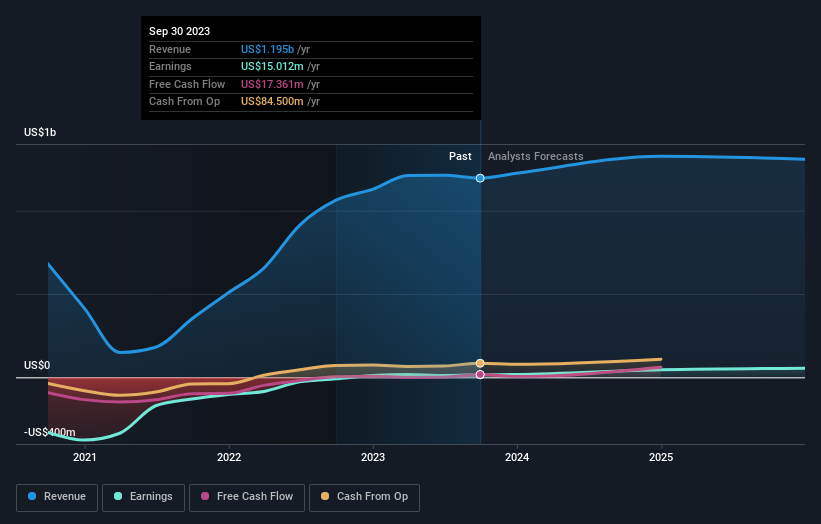
While Viad Corp (NYSE:VVI) might not have the largest market cap around , it saw a significant share price rise of 48% in the past couple of months on the NYSE. The recent rally in share prices has nudged the company in the right direction, though it still falls short of its yearly peak. Less-covered, small caps sees more of an opportunity for mispricing due to the lack of information available to the public, which can be a good thing. So, could the stock still be trading at a low price relative to its actual value? Let’s examine Viad’s valuation and outlook in more detail to determine if there’s still a bargain opportunity.
Check out our latest analysis for Viad
Is Viad Still Cheap?
Viad appears to be expensive according to our price multiple model, which makes a comparison between the company's price-to-earnings ratio and the industry average. In this instance, we’ve used the price-to-earnings (PE) ratio given that there is not enough information to reliably forecast the stock’s cash flows. We find that Viad’s ratio of 47.53x is above its peer average of 25.58x, which suggests the stock is trading at a higher price compared to the Commercial Services industry. But, is there another opportunity to buy low in the future? Since Viad’s share price is quite volatile, this could mean it can sink lower (or rise even further) in the future, giving us another chance to invest. This is based on its high beta, which is a good indicator for how much the stock moves relative to the rest of the market.
What does the future of Viad look like?

Future outlook is an important aspect when you’re looking at buying a stock, especially if you are an investor looking for growth in your portfolio. Buying a great company with a robust outlook at a cheap price is always a good investment, so let’s also take a look at the company's future expectations. Viad's earnings over the next few years are expected to double, indicating a very optimistic future ahead. This should lead to stronger cash flows, feeding into a higher share value.
What This Means For You
Are you a shareholder? It seems like the market has well and truly priced in VVI’s positive outlook, with shares trading above industry price multiples. However, this brings up another question – is now the right time to sell? If you believe VVI should trade below its current price, selling high and buying it back up again when its price falls towards the industry PE ratio can be profitable. But before you make this decision, take a look at whether its fundamentals have changed.
Are you a potential investor? If you’ve been keeping an eye on VVI for a while, now may not be the best time to enter into the stock. The price has surpassed its industry peers, which means it is likely that there is no more upside from mispricing. However, the positive outlook is encouraging for VVI, which means it’s worth diving deeper into other factors in order to take advantage of the next price drop.
So if you'd like to dive deeper into this stock, it's crucial to consider any risks it's facing. Our analysis shows 3 warning signs for Viad (1 is a bit unpleasant!) and we strongly recommend you look at them before investing.
If you are no longer interested in Viad, you can use our free platform to see our list of over 50 other stocks with a high growth potential.
New: Manage All Your Stock Portfolios in One Place
We've created the ultimate portfolio companion for stock investors, and it's free.
• Connect an unlimited number of Portfolios and see your total in one currency
• Be alerted to new Warning Signs or Risks via email or mobile
• Track the Fair Value of your stocks
Have feedback on this article? Concerned about the content? Get in touch with us directly. Alternatively, email editorial-team (at) simplywallst.com.
This article by Simply Wall St is general in nature. We provide commentary based on historical data and analyst forecasts only using an unbiased methodology and our articles are not intended to be financial advice. It does not constitute a recommendation to buy or sell any stock, and does not take account of your objectives, or your financial situation. We aim to bring you long-term focused analysis driven by fundamental data. Note that our analysis may not factor in the latest price-sensitive company announcements or qualitative material. Simply Wall St has no position in any stocks mentioned.
About NYSE:PRSU
Pursuit Attractions and Hospitality
An attraction and hospitality company, owns and operates hospitality destinations in the United States, Canada, and Iceland.
Proven track record with moderate growth potential.
Similar Companies
Market Insights
Community Narratives




